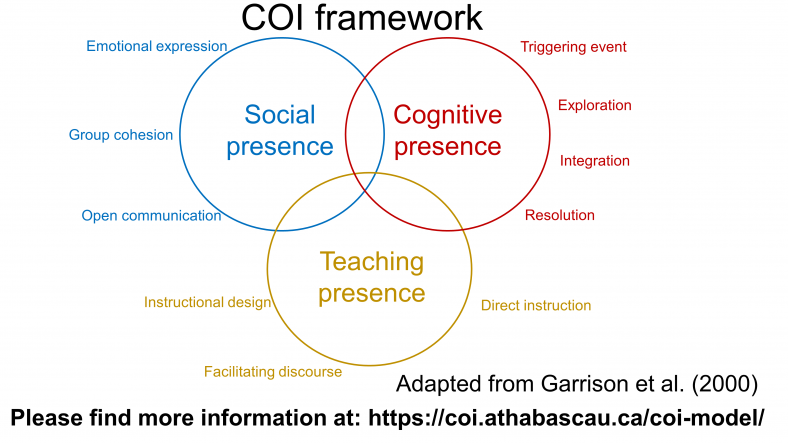Starting a new bachelor program in Public Health Sciences this fall will be awesome! I “just” need to put the pieces together, together with the other teachers in the team. However, there is so much new knowledge and experience in my head that I want to start working and creating on… yeah – everything at once! So… where do I start, as a program leader….

Based on the Scaffold model by Gilly Salmon, together with wise knowledge by Dr. Marti Cleveland-Innes, I truly believe that a sustainable and creative online course environment starts by “seeing the student”, even before the course starts. To set a platform of trust and engagement in students that could start by me sending out a “simple” letter, email or film-clip of me, welcoming them to us. By getting to know and form a relationship with them might increase their motivation (Cleveland-Innes, 2021) and willingness to share “of themselves”. I have sort of already started that process, without knowing (by literature) that this was a good way to go – but I just felt that this is something that I would’ve liked to experience before my studies, especially in this “Covid-situation” we ended up in. I emailed ALL students that had applied to the program (n=350) and about 50 of them showed up on two different occasions where I presented myself, the program and settings and answered pre-asked questions emailed to me and questions from an open Padlet. I believe that by taking the decisions by the students seriously and meeting them where they are, that make a difference for them. After the meeting, I had several emails, expressing gratitude that I had made it more clear what they are about to go into (pst, to understand public health area might be a bit more confusing than picking a nurse program).
Influential Community of Inquiry (COI)
To create an online course design is just something totally different that converting a campus course to a online mode. You need to consider that teaching in a classroom might not look the same as teaching online. I personally have developed so much during this year of “covid-teaching”, and that might be due to that I am, as a person, better set to coordinate, facilitate and interact.
I just LOVE that there is such a diversity of how a teacher can plan and prep for a course or a lecture in an online setting! The teacher can record film clips, prep assignments, give instructions along the way, adjust the learning environment and focus more on “taking care” of students’ follow up questions. But then I truly like to work as in “flipped classroom-mode”.

When I saw the COI-model by Garrison et al (2000), I knew that I am not “out bicycling” (as we say in Sweden when you don´t have a clue what you are doing). It was great to put the pieces on place regarding how to explain a conceptual framework relating new teaching methods to traditional forms of instruction. The learning should be an interaction between Social Presence, Teaching Presence and Cognitive Presence. The COI framework is designed for learning that happens within small groups of students, in a problem-based learning setting. It emphasizes the role of teachers as facilitators, hands more responsibility to students to direct their learning, and places emphasis on active means of learning, i.e. through collaboration, discussion and application of learnt knowledge.
Also Boelens et al (2017) confirm that in online and blended learning the teacher needs to plan interaction time instead of “classic teaching time”. Boelens highlight that there is four instructional activities related to the orienting and planning phase:
– measure prior knowledge,
– communicate course info and settings,
– communicate expectations, and
– get learners familiar with technology.
So let the planning and prepping phase continues as started…
References
- Boelens, R., De Wever, B., & Voet, M. (2017). Four key challenges to the design of blended learning: A systematic literature review. Educational Research Review, 22, 1-18
- Garrison, D. R., Anderson, T., & Archer, W. (2000). Critical inquiry in a text-based environment: Computer conferencing in higher education model. The Internet and Higher Education, 2(2-3), 87-105.
- Vaughan, N. D., Cleveland-Innes, M., & Garrison, D. R. (2013). Teaching in blended learning environments: Creating and sustaining communities of inquiry. Edmonton: AU Press.
- Cleveland-Innes, Marti. Webinar, 28.4.2021. https://kauplay.kau.se/media/t/0_2fudtovu